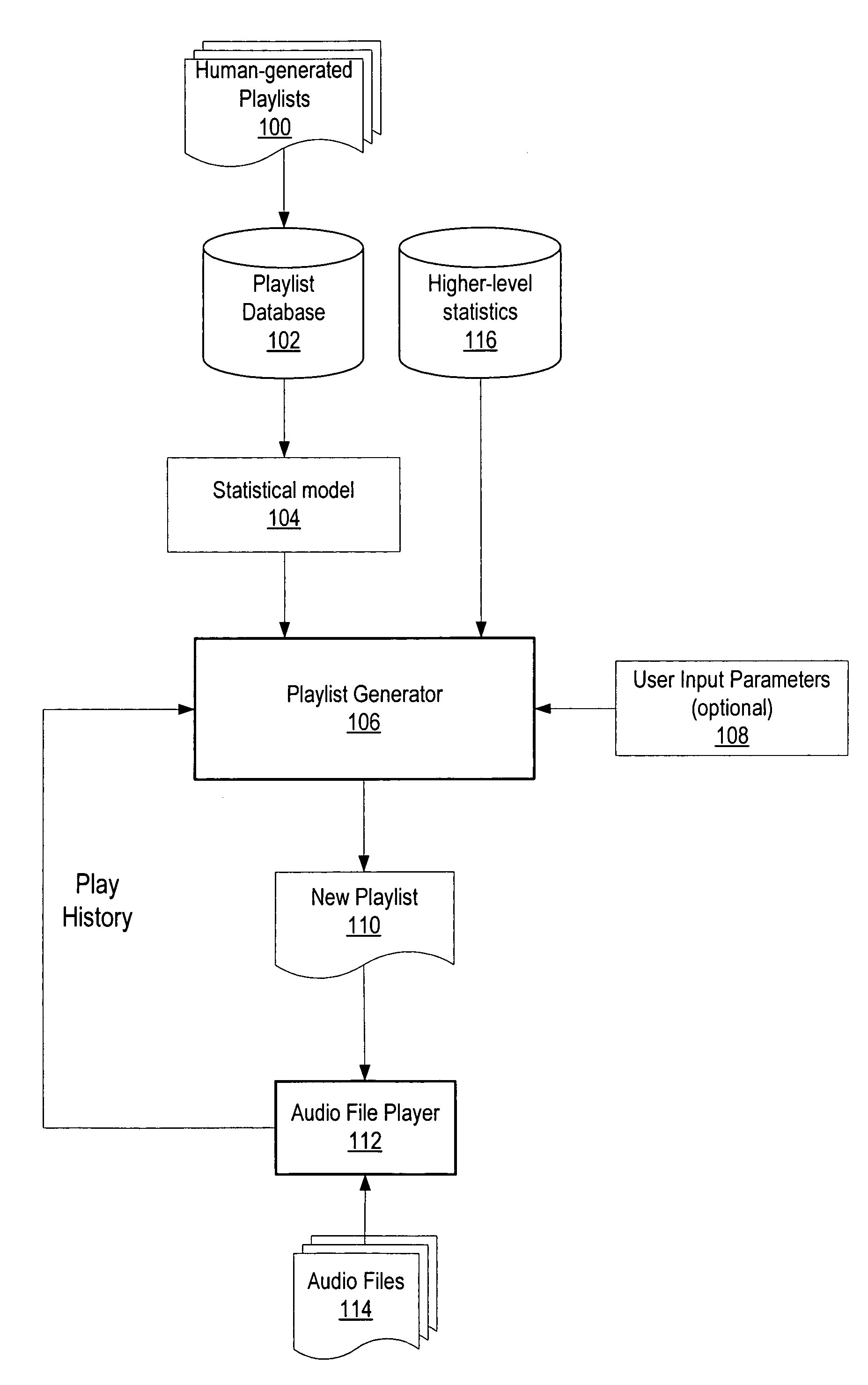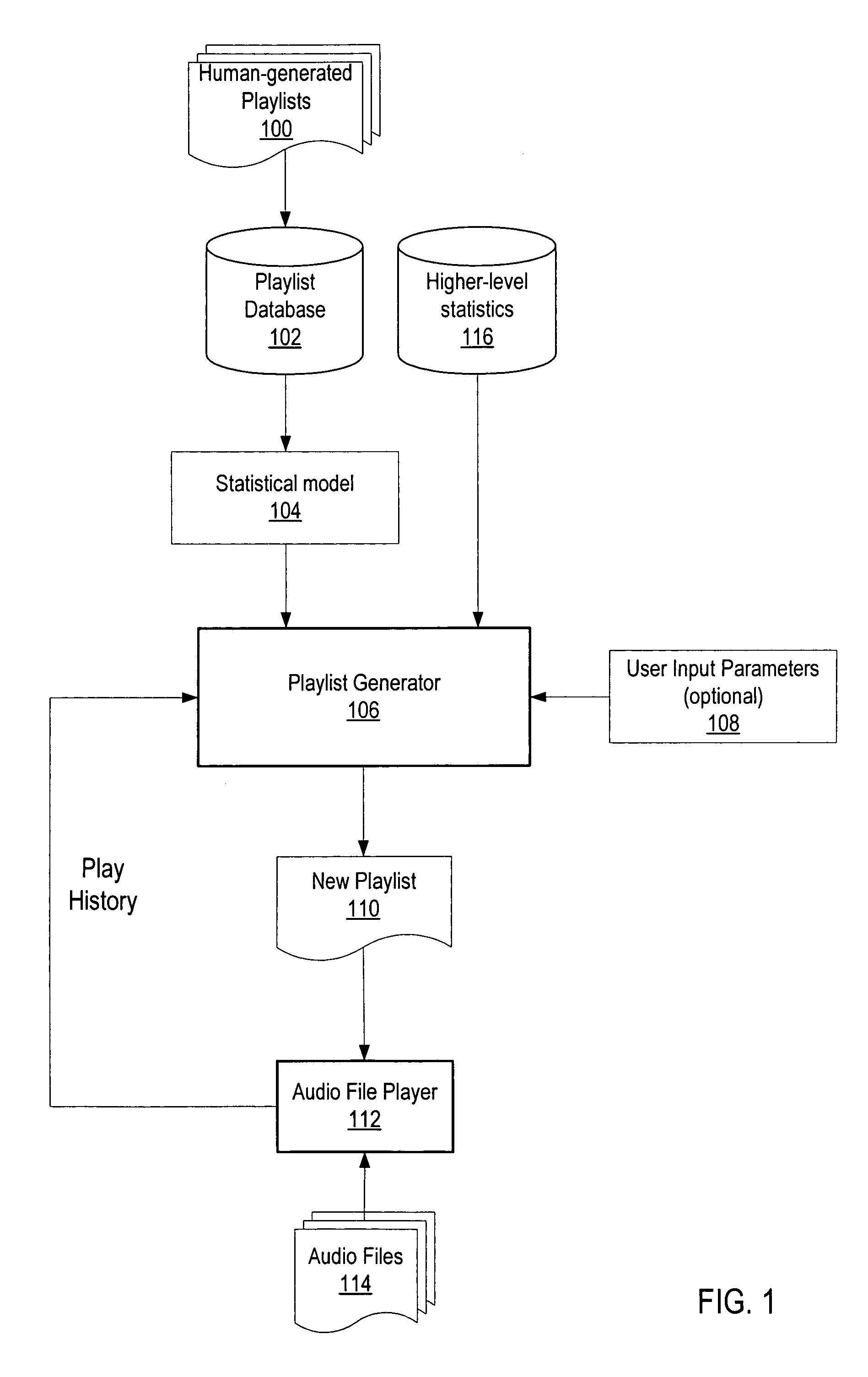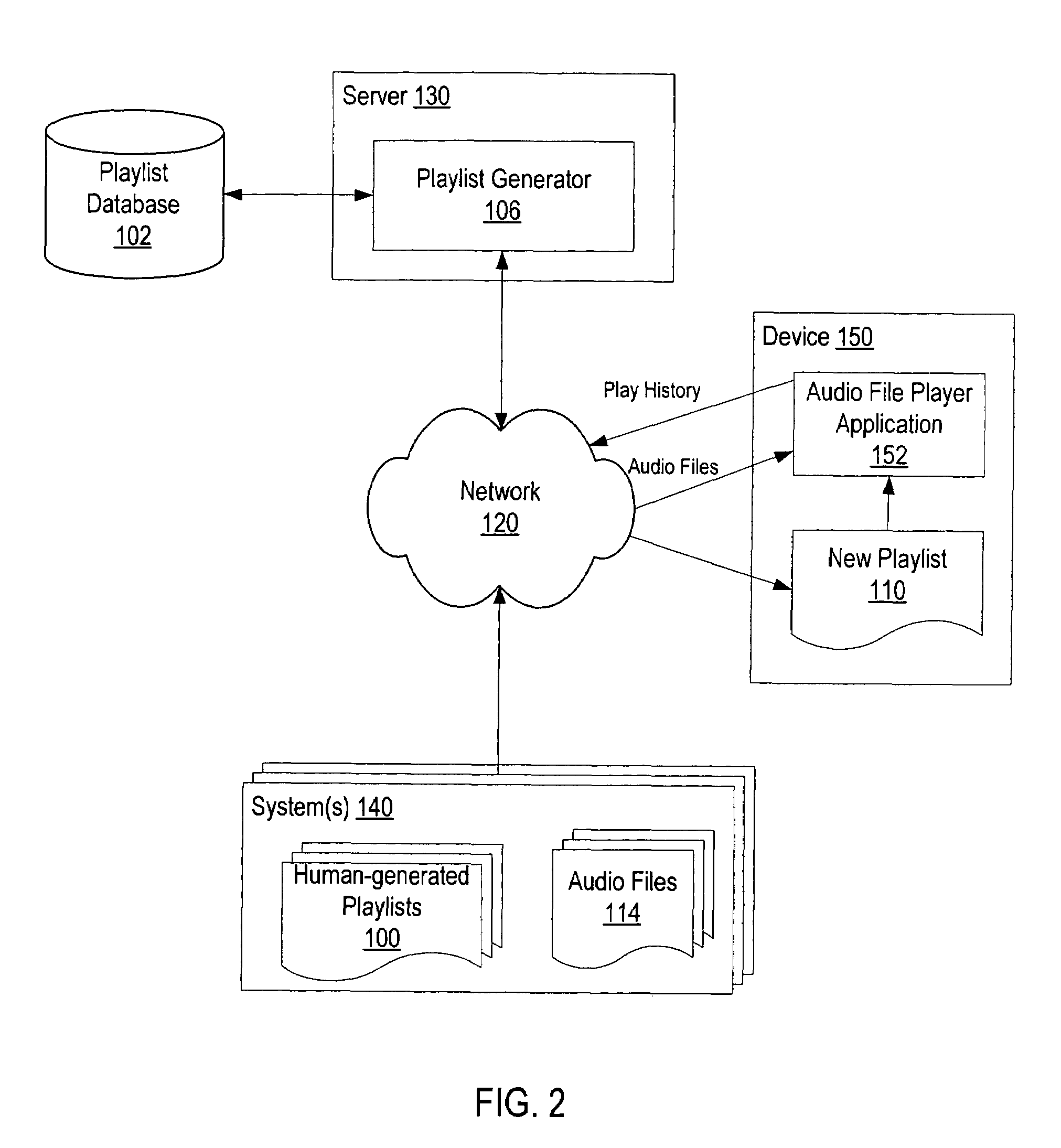Method and apparatus for programmatically generating audio file playlists
a programmatic and audio file technology, applied in the field of computer systems, can solve the problems of tedious and difficult tasks, limited user interfaces, and mechanical selection of songs, and achieve the effect of sufficient “coverage and easy automatic generation
- Summary
- Abstract
- Description
- Claims
- Application Information
AI Technical Summary
Benefits of technology
Problems solved by technology
Method used
Image
Examples
Embodiment Construction
[0028]Embodiments of a method and apparatus for programmatically generating interesting audio file playlists are described. In embodiments, a playlist generation mechanism may be used to automatically generate new playlists with interesting audio file orders from a statistical model based on collections of human-generated playlists. Embodiments may use an N-gram model of audio file ordering patterns found in the collected human-generated playlists to automatically generate new playlists that have more “interesting” orders. Some embodiments may employ backoff probabilities in the statistical model when audio files or transitions without sufficient coverage are encountered.
[0029]Embodiments of the playlist generation mechanism may leverage the available large number of human-generated playlists, for example available collections of human-generated playlists on various Web sites. These playlists are playlists that listeners have created by hand and that the listeners consider interesti...
PUM
 Login to View More
Login to View More Abstract
Description
Claims
Application Information
 Login to View More
Login to View More - R&D
- Intellectual Property
- Life Sciences
- Materials
- Tech Scout
- Unparalleled Data Quality
- Higher Quality Content
- 60% Fewer Hallucinations
Browse by: Latest US Patents, China's latest patents, Technical Efficacy Thesaurus, Application Domain, Technology Topic, Popular Technical Reports.
© 2025 PatSnap. All rights reserved.Legal|Privacy policy|Modern Slavery Act Transparency Statement|Sitemap|About US| Contact US: help@patsnap.com



